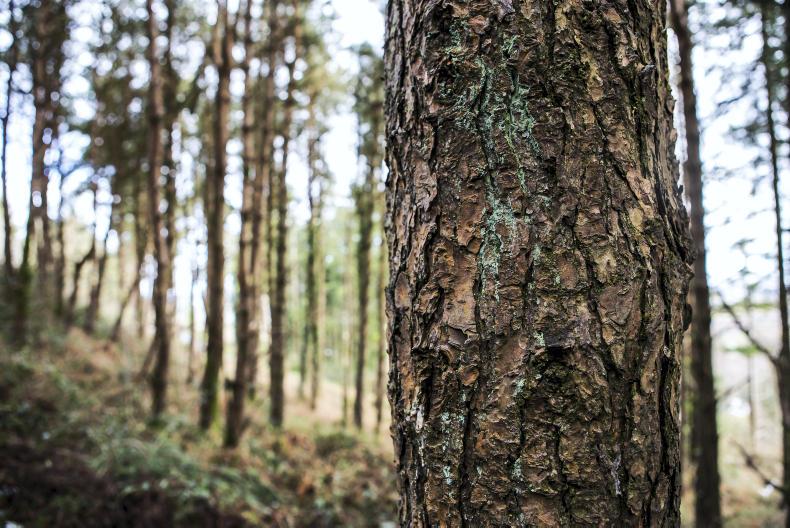The State’s finance watchdog has recommended that the Department of Agriculture reviews its forestry spending to ensure it represents good value for the State.
In its review of public spending, the Office of the Comptroller and Auditor General said the cost benefit analysis of the forestry programme should be updated in light of changes in 2018.

A 2014 study found that the State benefited by €1.18 for every €1 it spent on forestry grants, assuming 7,500ha was planted annually. Almost 40% of the benefit was from carbon sequestration.
However, planting rates have fallen short of the annual target of 7,235ha.
Just over 4,000ha was planted last year, a shortfall of 44%. This leaves the programme 4,651ha behind its target.
The Department of Agriculture identified several reasons for this, including negative publicity about coniferous planting, competition for land and the permanent land use change that forestry requires.
The spending watchdog raised concerns about planting rates for broadleaf trees and contrasting planting rates in different counties.
Under State aid rules, the Department is required to target at least 30% broadleaf planting.
Between 2015 and 2017, the average was just 20% broadleaf.
Higher grants rates were introduced in 2018 and broadleaf planting increased to 27%.
Although there are no regional targets for forestry, planting has been significantly higher in the northwest.
Between 2015 and 2018, Leitrim and Longford had the highest rate of afforestation at 28ha and 21ha per 10,000ha in the county respectively.
Donegal, Kildare, Wexford, Meath, Monaghan and Tipperary were all under 6ha per 10,000ha.
The Department said its new forestry programme will include a cost benefit analysis and a review of total investment in forestry since 1980.
Read more
Surge in non-farmer forestry in Roscommon and Cavan
Listen: replanting obligation and red tape raised as barriers to afforestation
The State’s finance watchdog has recommended that the Department of Agriculture reviews its forestry spending to ensure it represents good value for the State.
In its review of public spending, the Office of the Comptroller and Auditor General said the cost benefit analysis of the forestry programme should be updated in light of changes in 2018.

A 2014 study found that the State benefited by €1.18 for every €1 it spent on forestry grants, assuming 7,500ha was planted annually. Almost 40% of the benefit was from carbon sequestration.
However, planting rates have fallen short of the annual target of 7,235ha.
Just over 4,000ha was planted last year, a shortfall of 44%. This leaves the programme 4,651ha behind its target.
The Department of Agriculture identified several reasons for this, including negative publicity about coniferous planting, competition for land and the permanent land use change that forestry requires.
The spending watchdog raised concerns about planting rates for broadleaf trees and contrasting planting rates in different counties.
Under State aid rules, the Department is required to target at least 30% broadleaf planting.
Between 2015 and 2017, the average was just 20% broadleaf.
Higher grants rates were introduced in 2018 and broadleaf planting increased to 27%.
Although there are no regional targets for forestry, planting has been significantly higher in the northwest.
Between 2015 and 2018, Leitrim and Longford had the highest rate of afforestation at 28ha and 21ha per 10,000ha in the county respectively.
Donegal, Kildare, Wexford, Meath, Monaghan and Tipperary were all under 6ha per 10,000ha.
The Department said its new forestry programme will include a cost benefit analysis and a review of total investment in forestry since 1980.
Read more
Surge in non-farmer forestry in Roscommon and Cavan
Listen: replanting obligation and red tape raised as barriers to afforestation







 This is a subscriber-only article
This is a subscriber-only article










SHARING OPTIONS: